How To Properly Maintain Your PC For Peak Performance
Maintain Your PC For Peak Performance
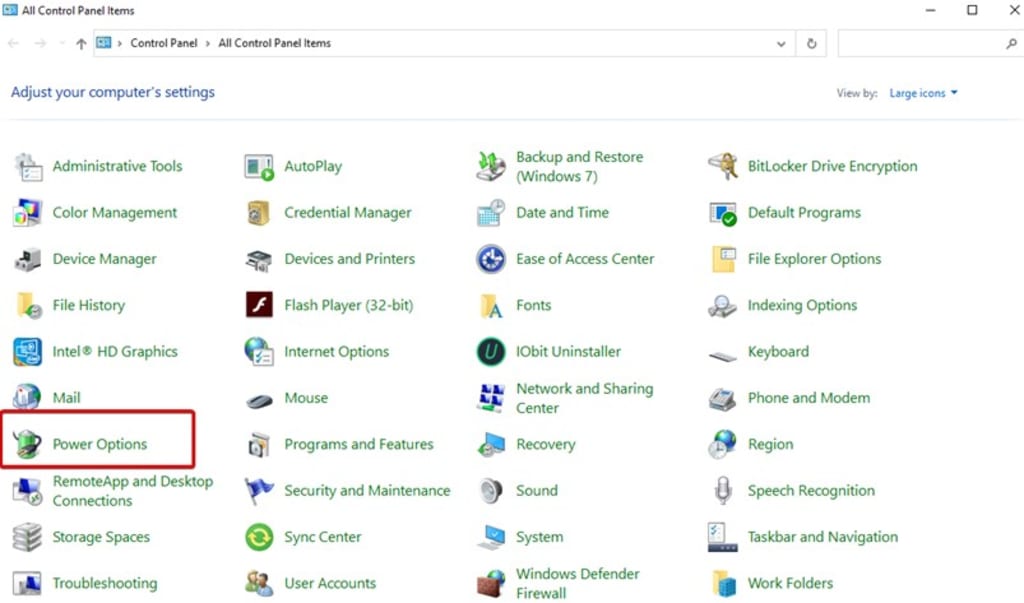
PC maintenance is quite a big necessity as it can hamper its overall performance with the passing time. The computer starts working slow with the time, starts freezing or crashing. Have you ever wondered why does it even happens? Well, there are several reasons behind a PC working slow, be it due to too many programs installed or the storage goes full. There might be some malware or virus thing too. Your computer can act abnormally as and when it gets cluttered with a lot of stuff.
Whatever is the reason, it is vital to declutter your PC and speed up its performance. Wondering how? Worry not, we've covered the best ways to keep up your PC’s peak performance in this article. Along with this, you can always consider having the best PC optimization tool installed and also keep your device drivers up-to-date. For this, you can consider having Smart Driver Care- a robust smart driver updater for Windows to have the latest drivers on your PC so that they cannot impact your device performance.
Tips To Maintain Your PC For Best Performance
If you are looking out for ways that can not only optimize or boost the speed of your computer, but also improve its performance, here are some of the best tips to consider.
1. Clean up Hard Disk
Your computer might run slow or perform sluggish due to the hard drive almost full. It is, therefore, better to free up some space on your computer so that you can smoothly access all the files and programs on your PC. It is advisable to clean up your hard drive at the very first instance. Here's how to do this:
- In the search box on the taskbar, type disk cleanup. Select Disk Cleanup from the list of results to open the tool.
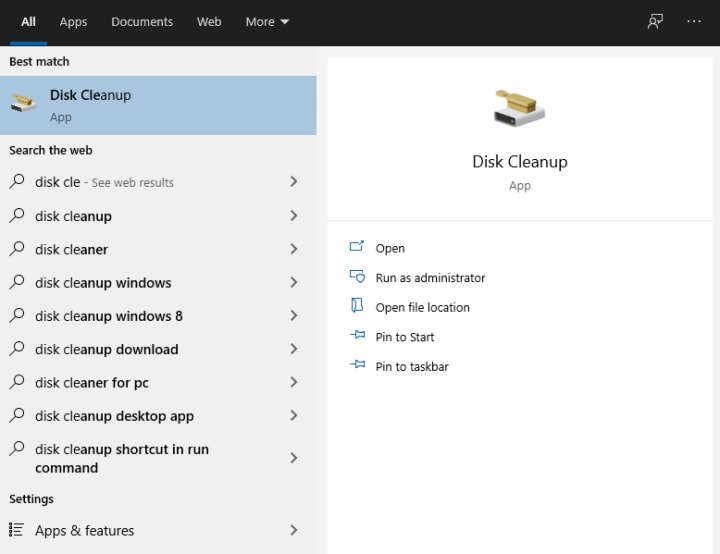
- Now, select the drive you want to clean up, and then click OK.
- Under Files to delete, select the file types to get rid of. Click OK to delete.
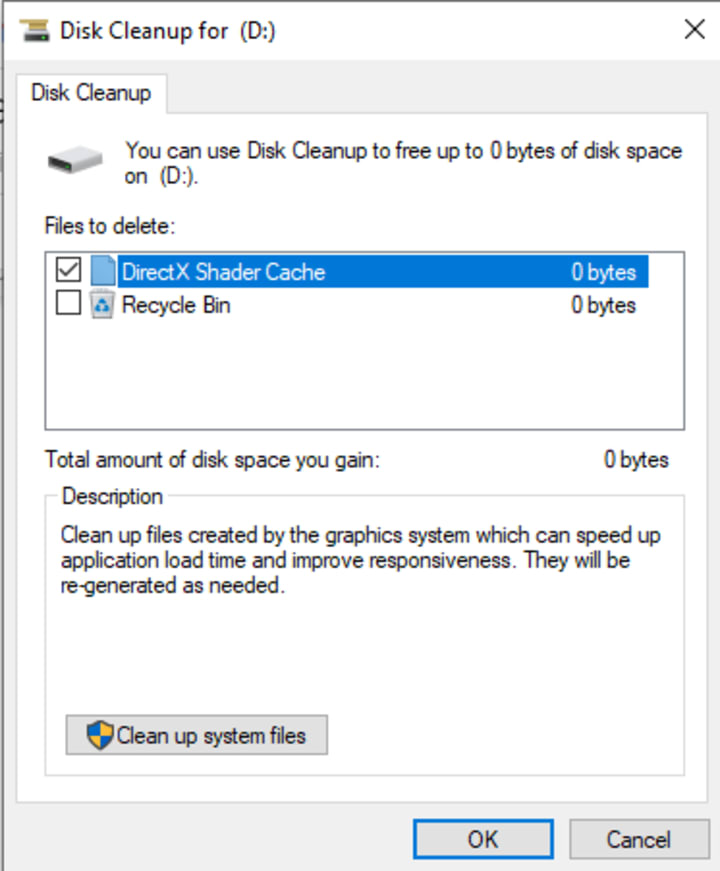
If you wish to clean up more space, choose to delete system files. For this choose Clean up system files and select OK.
2. Defragment Hard Drive
Defrag your hard drive as it helps in faster disk access time and improved system performance. You can either use a Defragmentation tool or you can opt for Windows 10 built-in utility. Here's how to defrag your hard drive:
- Search for Defrag using the search box on the Taskbar.
- Select Defragment and optimize drives. .

- Select the disk you want to optimize.
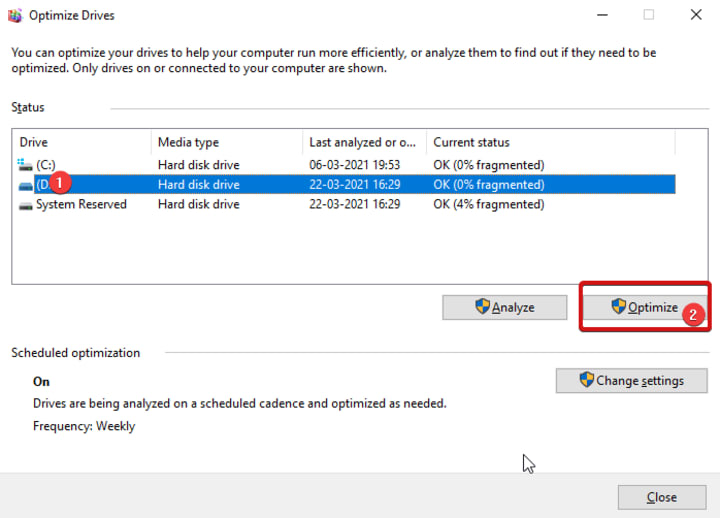
- Click on Optimize and that's all.
3. Take Advantage of Windows Defender
Windows 7/8/10 comes with a built-in free antivirus solution. You are free to take its full advantage as it is able to sniff and remove any sorts of malicious content or threats in a timely and efficient manner. We are talking about Windows Defender- a robust security solution for Windows. You can instantly scan for any threats on your system and remove them or you can schedule the scan for any time or date you require. This way you can get rid of malicious threats and you're all sorted with your PCs performance.
4. Regularly Update Your Windows PC
It is advisable that you always keep a keen eye on the coming Windows updates to keep up the performance of your computer. There are several system updates that keep on releasing from time to time. You should therefore keep a check on the Windows Update. Here are the steps to follow:
- On your keyboard, press Windows+I keys together to open Windows Settings.
- Click on Update & Security.
- Now, click on Check for updates. The Windows will check for updates and install any available
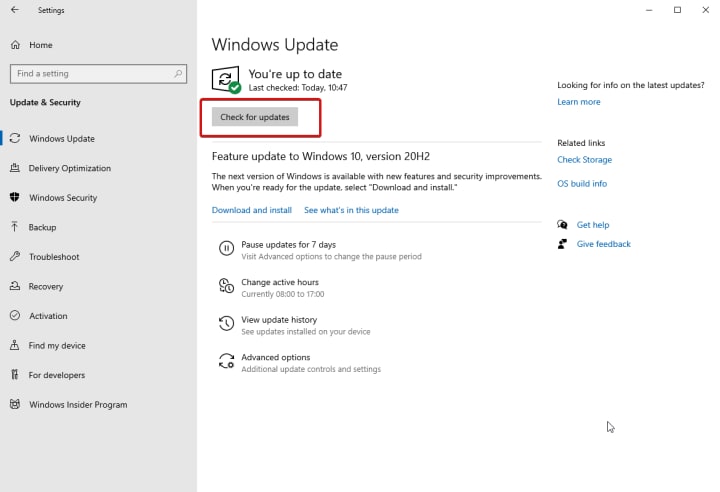
- That’s all! This way you can keep your system updated and hence make it perform better and faster.
5. Install A SSD
For smoother and faster performance, we recommend replacing Hard drive with a Solid State Drive i.e. SSD. It is advised because HDD is slower to read and write as compared to SSDs. Therefore, having a SSD lets you boot your Windows, load applications, open files quicker and faster. To install a SSD we recommend seeking the help of a professional. To check your storage disk type, follow the steps below:
- Press Windows key to bring up the Start Menu.
- Type in System Information in the search box and open the result that appears.
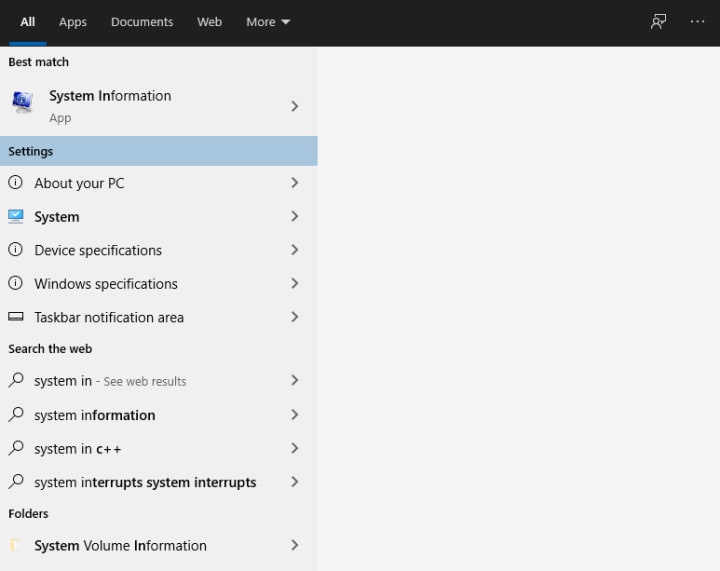
- Now, expand Components >Storage and then click on Disks. There you’ll see storage disk’s types in Model.
6. Consider Using 64-bit Version of Windows 10
If you have a CPU that supports 64-bit and you have a large amount of RAM, try using 64-bit. It is recommended to do so because 64-bit can address more physical memory as it doesn't have any limit. 32-bit windows are limited to 4GB of RAM and if you use 64-bit, your computer will have a better performance. Here’s how to check your current system version:
- Search for System Information using the search box on the Taskbar.
- On the Window that opens, you’ll see System Summary. Check the System Type to get the required information
7. Remove Startup Items
While you are looking for the ways to speed up your PC and maintain its peak performance, it is very important to remove programs from the list of startup items that auto-launch when you turn your PC on. Here’s how to do this:
- Head to Task Manager using Shift+Ctrl+Esc keys together.
- Now, navigate to the Startup tab and choose the program you wish to disable from the startup items list. Right-click on the program and click Disable.
8. Change Power Plan
Next comes using Windows 10 without Power Saver plan as it slows down your computer to save energy. So, if you do not care about the energy usage, you can set your Power Settings to High Performance using the following steps:
- Use your Windows+R key to open Run Window.
- Now type in control and press OK.
- From the next window that opens, click on Power Options.
- Then, click on Change plan settings.
- Click on Change advanced power settings.
- Now from the dropdown, select High Performance.
- Click on OK.
9. Update All Your Drivers
Last but not the least, update all your device drivers so that there is left no chance of your system crashing or working slow due to corrupt or outdated drivers. Whether you choose to update device drivers manually or you choose to update them all at once using a trusted driver updater software. We will be listing down both the ways here. The first method is using Device Manager- a built in Windows utility, and the other one is using Smart Driver Care- a robust driver updater tool. Whether it is display driver, bluetooth driver, or graphics, you can fix all of them using both these ways. The only difference is that while using Device Manager, you'll have to manually update device drivers one by one and while using automated tools like Smart Driver Care, you can scan for all outdated drivers at once and update them all together with a single click. Here’s how to use Smart Driver Care to update all device drivers in a go:
- Download and install Smart Driver Care from the link below.
- It is advisable, first head to Backup tab and click on Start Backup to take the backup of the current device drivers so that you can restore them using the Restore tab lately when some mishaps happen.
- Then, again head over to the Overview tab and choose to Scan Drivers.
- Wait for the scan to complete.
- You’ll then see a list of outdated drivers. Click on Update All to update all of them in a go.
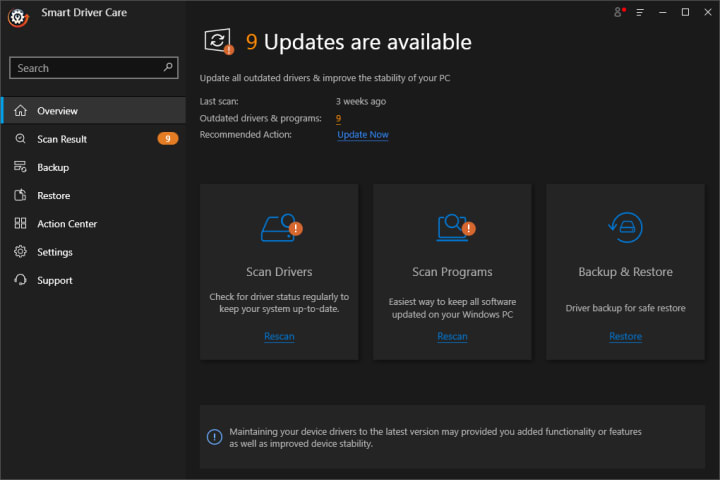
- That’s all. Restart your computer to apply changes.
How To Update Drivers Using Device Manager?
- Press Windows + R keys together.
- Type in devmgmt.msc and click OK.
- Now, from the list of different drivers, head to Display drivers for instance. Expand the options underneath.
- Right-click on the display driver and click Update Driver.
- You’ll be then asked ‘how do you want to search for drivers’. Choose Search automatically for the drivers and then wait for your system to auto-search the latest drivers and install them.
- Restart your PC to apply changes.
Final Words
So, these were some of the best and sorted ways to maintain your Windows PC for better speedy performance. These ways are quite helpful and you can check up your PC, maintain it and optimize it for better performance. If you anytime experience trouble in using your system, try updating your device drivers using Smart Driver Care, you’ll immediately get sorted with the problem. Try these ways and let us know if you have any queries or suggestions in the comments section below. Also, give us your feedback on how you like Smart Driver Care as a driver updater utility for Windows.





Comments
There are no comments for this story
Be the first to respond and start the conversation.